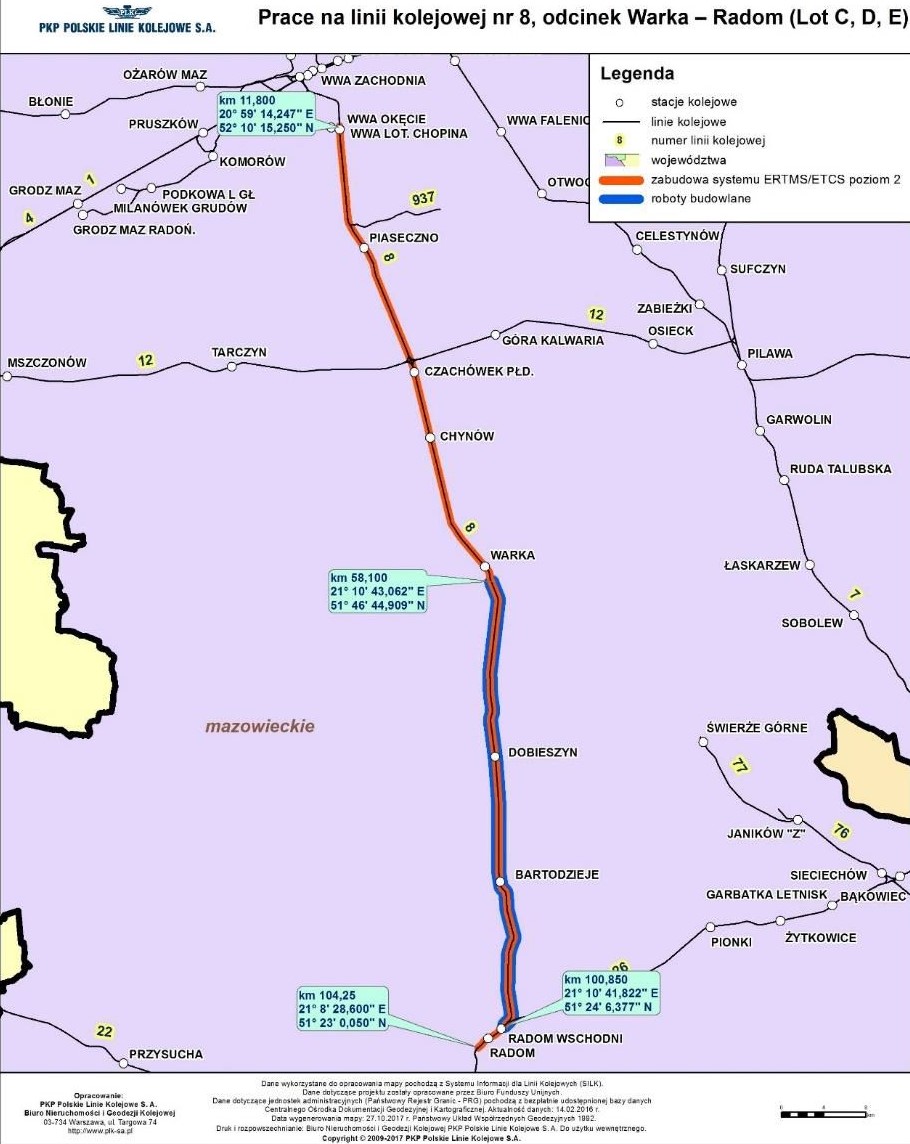The project involves the modernisation of the 42.75 km Warka-Radom section of Poland’s railway line 8. In addition, level 2 European Train Control System (ETCS) equipment – the automatic train protection component of the European Rail Traffic Management System – will be installed on the 92.45 km of the line between Warsaw Okęcie and Radom.
Modernisation works on Poland’s Warka-Radom railway line
- 08 January 2020
Modernisation includes addition of a second track between Warka and Radom, reconstruction of the Pilica river bridge, and building or rebuilding of five rail and two road viaducts, 14 rail and two road bridges, and two underground passages.
Located in the south of the Mazowieckie region, the line is part of the comprehensive trans-European Transport Network, but in many places, train speeds cannot exceed 60 km/h. The works will allow maximum speeds of 160 km/h for passenger trains and 120 km/h for goods trains, and maximum loads of 221 kilonewtons/axle.
Upgrades to stations, stops and crossings
Certain stations and passing loops will be converted into passenger stops, while at one station and nine stops, platforms will be adapted to the needs of persons with reduced mobility. As regards crossings, grade separation with roads will be introduced in places with high traffic volumes, some 67 level crossings and 15 pedestrian crossings will be modernised, and 18 level crossings and 23 pedestrian crossings will be closed.
To support ETCS implementation, modern computer signalling equipment and automatic systems will be put in place. The latter will be managed from the local control centre.
Traction installations, including overhead and supply lines, will be replaced and three substations will be built at Grabów nad Pilicą, Bartodzieje and Dobieszyn. In addition, power installations for signalling and lighting will be modernised.
The upgrades will bring the railway into conformity with technical specifications for interoperability related to infrastructure, energy, control-command and signalling, and accessibility for persons with disabilities. This will ensure non-discriminatory access to Polish railways for operators from other countries.
In the operational phase, steps will be taken to better integrate the railway with other modes of transport. This will include reorganisation of the regional bus network to strengthen connectivity, provision of park-and-ride facilities at stops and stations, and introduction of an integrated tariff system.
More competitive railways
A main objective of the project is to develop railway infrastructure that provides fast, frequent and punctual passenger and freight connections at regional and local levels and between major economic centres. Achieving this will widen accessibility for potential passengers and boost the competitiveness of the railways in relation to other transport modes. Greater competitiveness should lead to a modal shift which reduces the negative environmental impact of transport, in line with EU and national sustainability goals.
Raising speeds, shortening journey times and boosting capacity with the construction of a second track will help attain these objectives. Further aims are to increase provision of information for passengers and freight carriers, to improve safety on the railway and for road traffic at crossings, and to rationalise operating and maintenance costs.
Total investment and EU funding
Total investment for the project “Works on railway line no. 8, section Warka-Radom (Lot C, D, E)” is EUR 213 913 821, with the EU’s Cohesion Fund contributing EUR 127 818 309 through the “Infrastructure and Environment” Operational Programme for the 2014-2020 programming period. The investment falls under the priority “Development of railway transport in Poland”.

